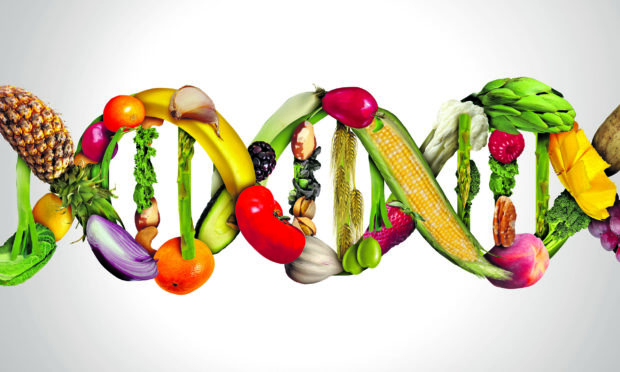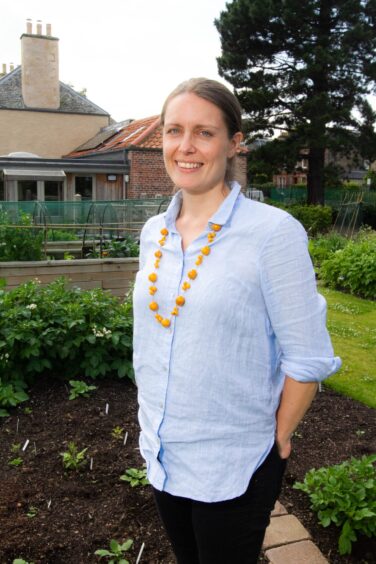
Bigger and tastier fruits and vegetables could soon be gracing our plates, thanks to trailblazing research in Scotland and the US.
Experts at the Royal Botanic Gardens Edinburgh (RBGE), working with colleagues in New York and Baltimore, have discovered genes that control how large edible plants will grow.
The scientists say the breakthrough could lead to new varieties of current favourites such as heirloom tomatoes and aubergines, and could eventually be developed to supercharge other common vegetables, as well as key crops such as wheat.
They say there’s a possibility of using gene editing in the future to even grow potatoes that are easier to peel, or produce fresh pasta that will last a lot longer in the fridge than two days.
At the same time, the developments could help improve food security around the world by helping to support agriculture in areas where local varieties of these common foods are too small for large-scale production.
Ground-breaking project
Dr Tiina Sarkinen, a tropical biodiversity expert at the RBGE, worked on the Scottish end of the ground-breaking project.
She said the scientists discovered new genes in tomatoes and aubergines that control how many seed cavities will grow and that by using precise genetic engineering techniques, they can now target these genes and grow plants with bigger fruits.
She said: “Plant genomes are far larger and more flexible than the human genome and we found that this ability to duplicate genes and give them new functions – such as larger or tastier fruits – and the rate at which plants duplicate genes, sets them apart from other organisms.
“This could change the way we think about how plants evolve.”
The study – led by teams at Johns Hopkins University and Cold Spring Harbor Laboratory in the US – is part of a larger effort to map the complete genomes of 22 crops in the nightshade family, which includes tomatoes, potatoes and aubergines – referred to by the US scientists involved in the research as eggplants.
“Once you’ve done the gene editing, all it takes is one seed to start a revolution,” said study co-lead Michael Schatz, a geneticist at Johns Hopkins in Maryland.
“With the right approvals, we could mail an engineered seed to Africa or anywhere it’s needed and open up entirely new agricultural markets. There’s huge potential to translate these advances into real-world impact.”
Food production
Worldwide food production is based on fewer than 10 commercially bred crops, including potatoes, tomatoes, rice and wheat. Yet there are hundreds of species of edible plants, many within the same 10 plant families, already being grown locally in Africa, Asia and South America, that could contribute to agricultural biodiversity and resilience.
Until now, efforts to engineer and scale up production of these regionally important foods crops, based on our existing genetic knowledge of commercial crops, has been limited, said Dr Sarkinen.
She explained: “By understanding how gene evolution impacts on traits in today’s crop species, we are one step closer to improving regionally important crops in ways that can support both worldwide production and the people who rely on these species.
“The research discovered that a previously unknown but complex history of gene duplications, often taking place over a relatively short period of time, helped to explain why outcomes had been so unpredictable, even within closely related species.
“Within the plants we found literally attics full of useful genes that can then be modified very carefully.”
As a result of this new research, science now has a deeper understanding of the genetic information hidden within industrially produced crops, and how genes determine traits such as size, shape and taste in the food that we eat. That knowledge can be used to engineer resistance to disease, generate higher crop yields and improve flavour.
“By analysing high-quality DNA blueprints from multiple crops and their wild ancestors in the Solanum genus – including tomato, eggplant and potato – we tackled the challenge of making crop improvements more predictable through genome editing,” said professor Zachary Lippman from Cold Spring Harbor Laboratory in New York.
“Our multi-pronged solution lays the groundwork for similar advancements in other plant families, including key grains and legumes worldwide.”

Enjoy the convenience of having The Sunday Post delivered as a digital ePaper straight to your smartphone, tablet or computer.
Subscribe for only £5.49 a month and enjoy all the benefits of the printed paper as a digital replica.
Subscribe © Chris Austin
© Chris Austin © Gregory Pace/Shutterstock
© Gregory Pace/Shutterstock